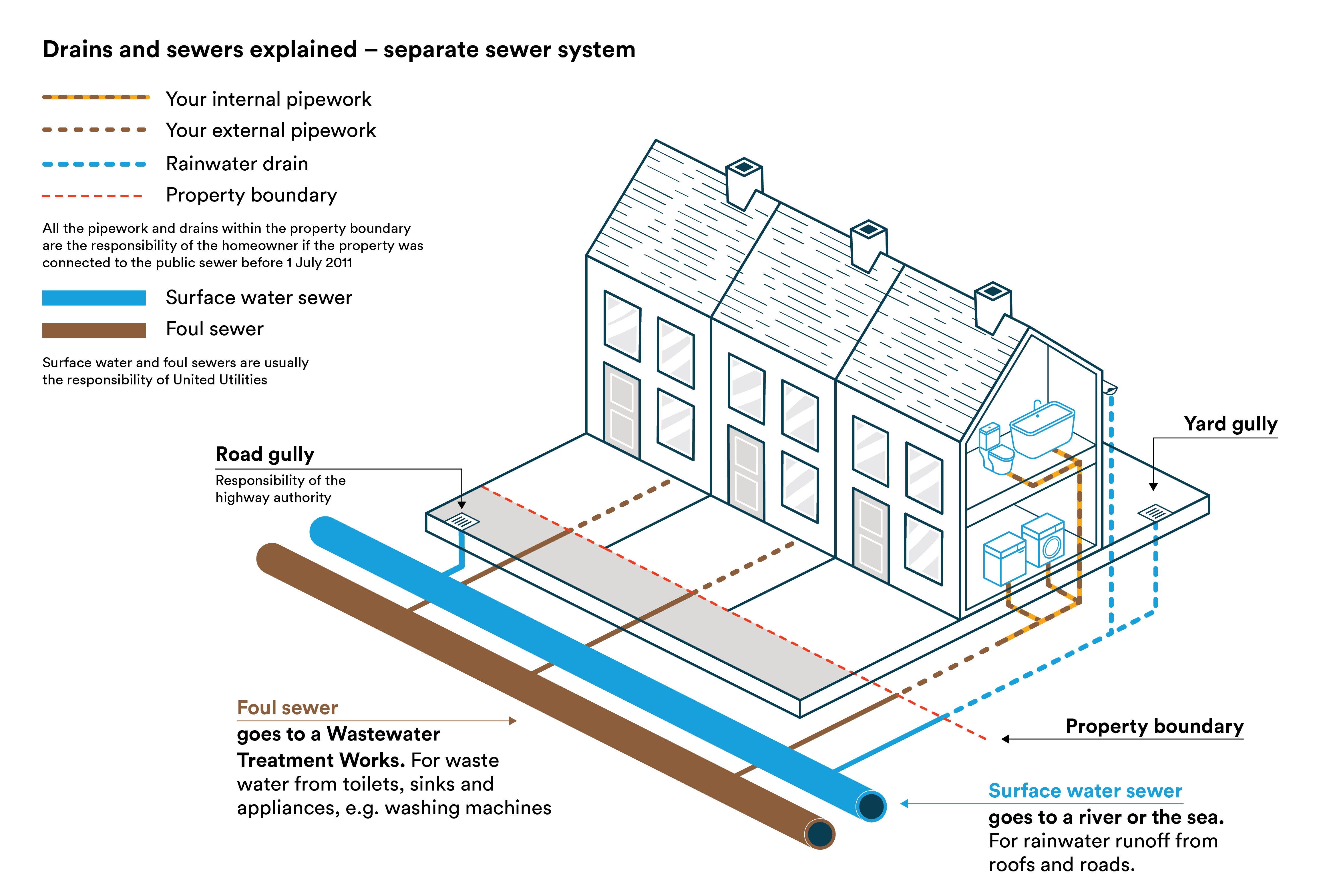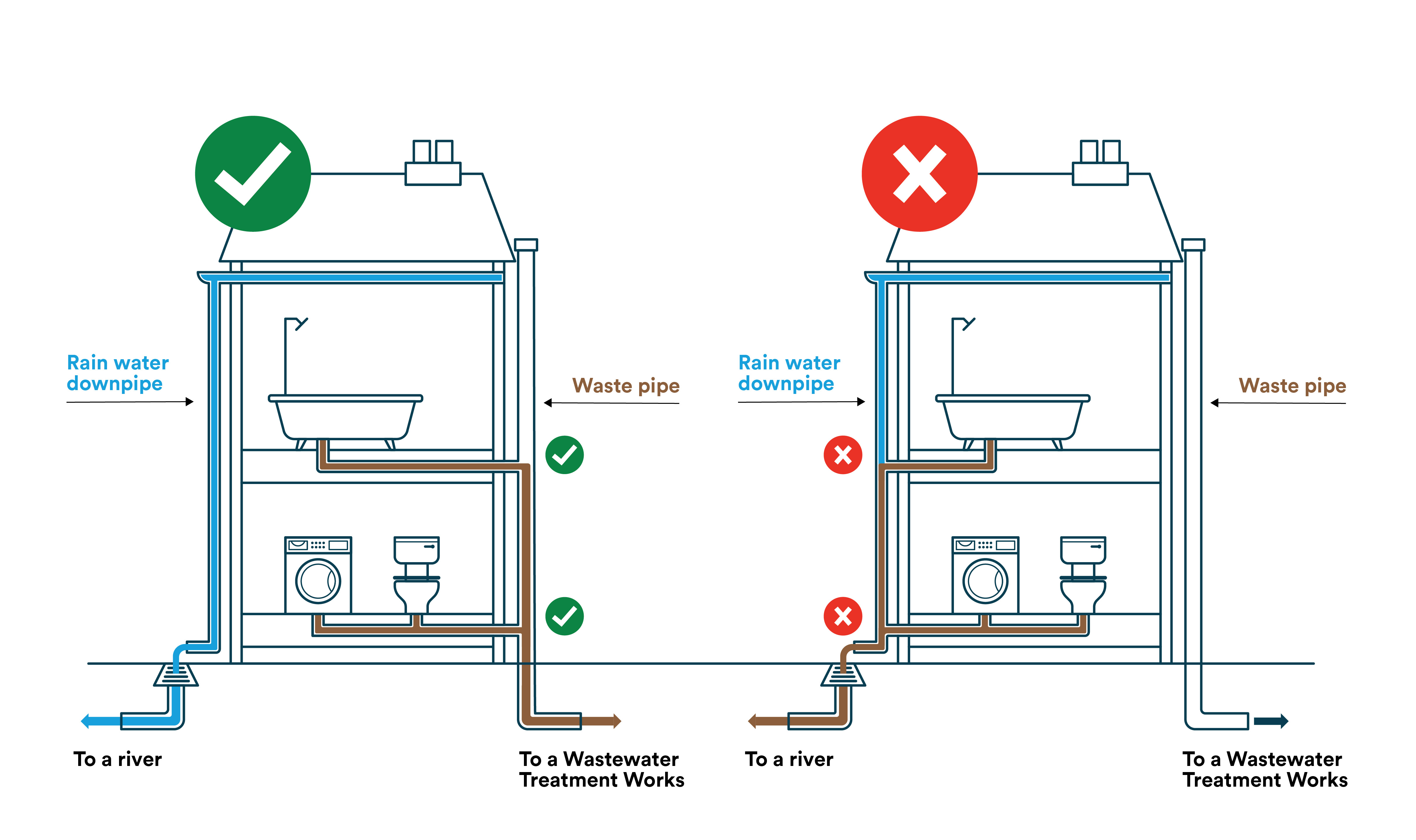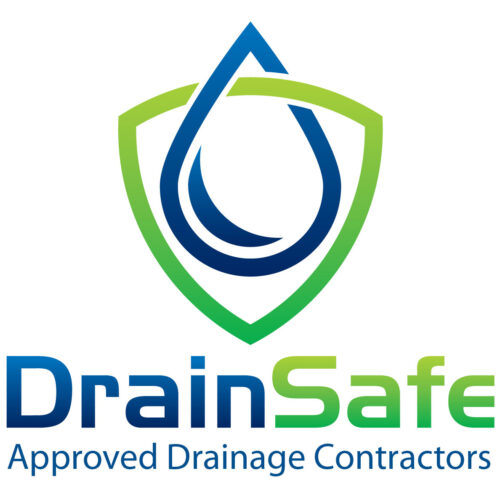What is a misconnection?
Understanding misconnections
A misconnection occurs when a building's drains are incorrectly connected to the sewer network. This can occur as a result of incorrect plumbing, which is often unintentional, but can cause multiple issues for the sewer system and local waterways.
Modern households typically have two types of drains that take water away from the property:
- Foul drain– this drain takes wastewater from toilets, sinks, showers, baths, washing machines and dishwashers to a wastewater treatment works where it is cleaned and treated so it can be safely returned to rivers and the sea.
- Surface water drain– this drain takes rainwater direct to local watercourses, streams and rivers.
The diagram below shows the foul and surface water sewer systems. The brown pipework shows wastewater from the house entering the foul sewer, which will flow to the nearest wastewater treatment works. The blue pipework shows rainwater which will drain straight to a watercourse or the sea via the surface water sewer.

It’s really important that toilets, baths, showers and water-using appliances, such as washing machines and dishwashers, are all connected to the foul drain. If appliances are connected to the rainwater or surface water drain, the foul wastewater will go straight into local watercourses leading to a pollution incident.
This diagram shows how the shower, toilet and washing machine have been misconnected to the surface water system resulting in a pollution incident to the local waterway.
Who is responsible for fixing a misconnection?
It is the legal responsibility of the property owner to make sure a misconnection is put right. If you are renting your property, please contact the landlord and make them aware of the issue.
What is United Utilities doing to reduce misconnections?
Once a contaminated watercourse has been discovered, where the foul wastewater is going where it shouldn’t, the pollution can be traced back to the property where the waste pipes are misconnected using techniques such as dye-tracing and closed-circuit television (CCTV) surveys of the pipes.

